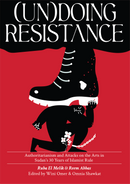Description
Upon their arrival to power through a coup d'état in 1989, the Sudanese Islamist regime (known as Inqaz) shutdown the national theatre, closed all cinemas, banned love songs on public channels, discontinued magazines and confiscated boos. Artists found themselves arrested on morality and decency charges and within a year, arts institutions were shut down.
By terminating the entire infrastructure that artists depend on to survive and thrive, the authorities sought to control the art produced; consequences of this control shaped the art that was produced for three decades, up until the 2018/2019 uprising that partially ousted the regime.
This book explores how the regime's war on artistic principles transformed the arts and culture in Sudan. We focus on three themes: firstly, the closure of the Higher Institute for Music and Theatre that led to lack of resources and opportunities, secondly, the reasons for and patterns of artists' migration, dispersal and exile during the regime and lastly, the arts resistance of the 2018/2019 uprising. The book weaves historical moments and artists, curators and industry players' stories regarding the stagnation and potential revival of art and its infrastructure as part of an ethnography that spans five states: Khartoum, Blue Nile, Sennar, North Darfur and Al-Jazeera.
The book expects that reproduction of artists' collective memory regarding the early years of Inqaz will lead to the comprehension of Sudan's contemporary history whilst constructing an overarching narrative that makes visible to us the thought, theory, principle that has shaped artistic resistance from 1989 until today.


